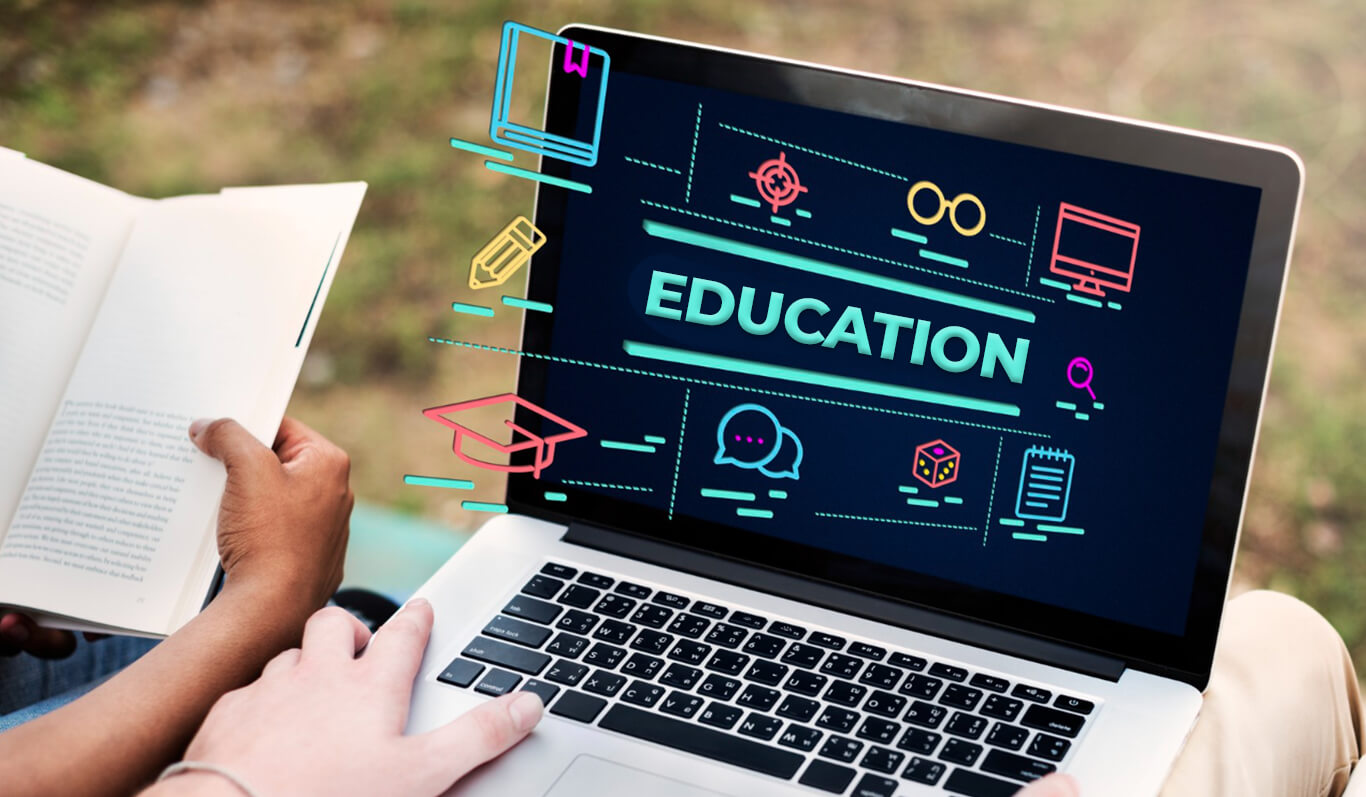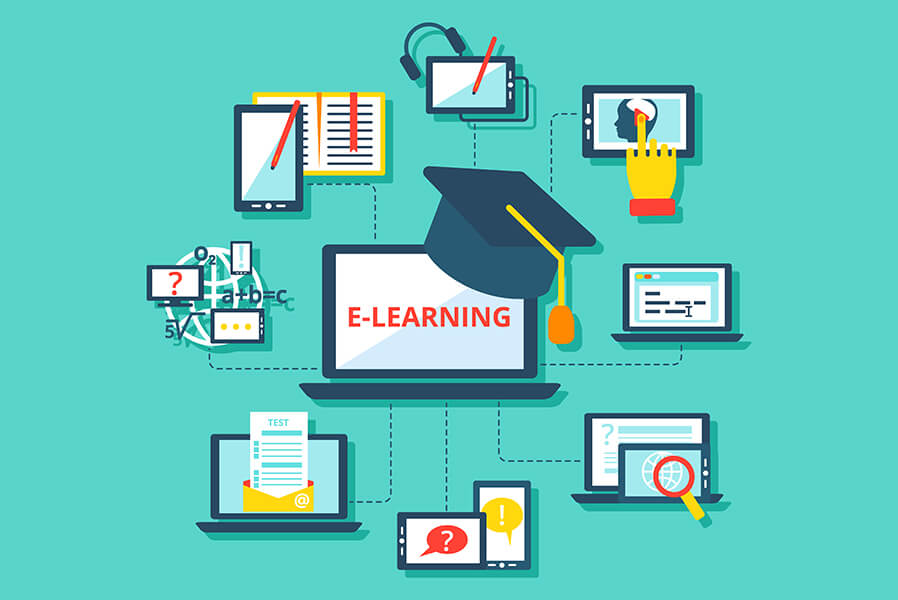How Technology Is Shaping the Future of Education

A great deal has changed in the technological world in the last few years. The increasing popularity of digital media has created a need for teachers to adopt the latest tools in their work to keep students engaged and entertained. Engaging students requires being creative in introducing novel ideas so that students are excited about the subject they are studying. Due to the importance of educational technology in today's education industry, technological tools have become essential in student learning systems.
Technology advances over the years have had a significant impact on every aspect of human life. Our lives have become more and more centred around technology and, as a result, from the youngest member of the household to the not-so-tech-savvy oldest member, we expect every device to be as technologically advanced as possible, including the light bulb. So why should educational institutions be untouched by the latest tech?
Hence, schools have also embraced technology as a fundamental part of their education process. This has led them to offer computer science classes, from a very young age, where young minds are taught to code and to use them in their academics for moulding a future for themselves.
The use of online technology in education has become more relevant in today's classroom. This is because it provides a way for students to learn at a much faster pace than if they did not have access to these tools and programs.
How does technology benefit education?

Let's have a look at some of the benefits that come with using educational technology.
Easy access to a wide choice of updated material
The wide selection of educational technology available today offers students many options. Among these options, they can select the one that is most suitable to meet their educational requirements. As a result, they are able to acquire the skills and knowledge they need to excel in their respective fields. In addition, they also gain access to the most updated and relevant information about any topic. For instance, referring to a paper published online to write a class assignment is going to fetch you more marks and keep you on top of the topic than leafing through the stack of encyclopaedias at your house.
Improves communication skills and performance
In the workplace and in academia, students who can effectively communicate through technology will do better than their non-technical peers. Communication skills are very important when trying to convey messages clearly.
Makes learning fun and engaging
Learning today requires more than just doing the work. It also requires learning to be fun. Students are easily distracted. Especially now with the time-consuming influence of social media. Learning through the use of educational technology will also keep students engaged and motivated.
Stay connected through the net
Our lives have become so intertwined with the internet that it is rare to find anyone who does not use it every day. For students today, access to the internet anywhere, at any time, is essential. They need access to information to get their assignments and research done at any time without having to travel or wait for a particular moment. Edtech helps them in this regard. Students are able to connect with the internet when they are at home, in a classroom, or at school using educational technology.
Stay updated and relevant
The pursuit of new skills and knowledge is one of the most significant aspects of life that anyone should be able to enjoy. Technology can help you to develop these skills and also develop their knowledge through a variety of online programs. They offer people the opportunity to learn about different subjects that are of interest to them and useful to their careers or academic fields. Even people who want to try out a new career path can gain access to online programs that let them learn the relevant skills.
Learn and improve skills
The use of educational technology also has an impact on a person's health. It can improve the learner's mental and physical health. Using these tools, individuals are able to strengthen their learning skills and cognitive abilities, which is reflected in their academic performance and physical well-being.
Stay current
Technology advancements allow students to increase their knowledge of different fields and gain new skills that can be used in the future. Students who stay up-to-date with the latest technological advances will have the advantage of improving their knowledge of different fields. In addition to having a very thorough understanding of new technologies, these students will be well equipped to land a job faster. They can help companies become more efficient by knowing how and why these technologies can be used.
What are the different edtech tools used by teachers in education?

Demand-based learning
Education systems in the past could not adequately accommodate the concept of an individualized learning experience for everyone due to far too many limitations. Technology in education has led to the ability to create custom teaching and learning methods and experiences in our current educational institutions. Modern gadgets and interfaces allow anyone to start learning, regardless of their needs, preferences, or availability.
The development of mobile and web apps for education has ushered in an era of demand-based learning instead of the one-size-fits-all mentality of classroom education. For instance, a shoe salesman can become a data scientist by accessing relevant programs through a mobile app.
Student insight
High-tech is becoming increasingly ubiquitous in the educational system, and educational data is becoming an increasingly important tool for driving and making decisions. With so much education information and data available, it is increasingly critical to measure student engagement, traction, and academic output. Eventually, learning analytics will be able to warn teachers of issues and help them be proactive. It can also inform students about their progress and assignment deadlines, etc. Teachers and students will be guided by learning systems in how education is transmitted and experienced. Data analytics will maximize learner engagement in education.
Cloud computing
With cloud computing, high-tech education became possible like never before. Throughout the world, information stored in remote cloud servers of the apps made it possible to access courseware and educational materials from any mobile device or any location. You can collaborate with your peers and share your coursework easily with your tutor via the cloud. Furthermore, cloud-based education apps were able to solve the problem of data storage as well.
Voice recognition technology
Virtual assistants and voice recognition software have now become standard on most devices and app platforms. Voice-activated intelligent assistants make things easier for students. The speech-to-text feature, available on most mobile devices, makes note-taking and writing even more convenient and quicker allowing achieving knowledge to be unrestricted to all.
Learning through virtual reality
The use of Virtual Reality and Augmented Reality has greatly impacted online education. Learners can benefit from immersive learning experiences that are powered by virtual reality and augmented reality without the need to move. When running a 3D underwater diving video on your smart TV, you can float around in the water as your headset depicts the deep blue of the sea while the background voice continues to guide you. In medicine too this has its benefits. Students gain a deeper understanding of critical operations when they watch real-time broadcasts of surgical operations.
3D printing
Through 3D printing or prototyping, students can learn in a more hands-on and tangible way. Thanks to 3D printers, students can easily create objects based on their ideas. This allows them to take their ideas and make them a reality. It enables students to unlock their creativity and have more hands-on learning opportunities.
Gamification
Gamification is the personification of how learning can be made fun and engaging. Anyone, even adults, learns better when they’re having fun. Kids are no different. Gameplay in the classroom enables students to connect the fun aspect of the game with the content and concepts they must learn. Gamification increases student engagement, keeps their interest piqued, and creates excitement for the lesson.
Artificial intelligence
Artificial intelligence is a very useful tool for teachers. It is advancing in the educational sector by providing many amazing features such as automated grading and feedback and providing personalized learning opportunities. Teachers can save time by automating the grading process and providing automated feedback. This is one handy technology to have around.
Conclusion
It is truly impressive how far technology has come. It is important to recognize that our students grow up in an increasingly technologically advanced world and provide them with unique opportunities to access and experience these developments. Students should be given ample opportunities to use the available technology so that they can stay current and contribute to world growth as efficiently as possible.
FAQs
What is the role of technology in education?
Through the use of technology, schools are aiming to improve how they analyse, present, share, and access information. In addition, this can help to impart instructions effectively, particularly for students with special needs.
How can technology enhance the classroom learning experience?
Students can learn many practical skills through technology, including developing new skills, learning how to identify reliable sources of information online, accessing information and sharing assignments, etc. Students can develop these skills through technology in the classroom.
Request a Quote
Categories
Popular posts
Best Practices for Software Product Engineering Every CTO Should Implement
2023-14-18How to Build Your Own On-Demand Carpooling App Services?
2023-08-25How to Start an On-Demand Fuel Delivery Business: A Comprehensive Guide
2023-07-28Empowering Miners: How Fleet Management Apps are Transforming the Mining Industry?
2023-07-21A Complete Guide to Develop a Food Delivery App for Restaurants in 2023
2023-07-08Mobile Apps Transforming the Travel Industry: A Game-Changer in Travel Planning and Experience
2023-07-07
